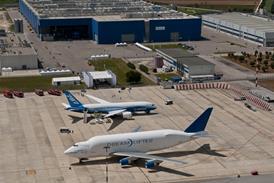Scoot has a new weapon: the Airbus A320neo. Although it had an event to celebrate the type's arrival in its fleet, it is taking a slow approach with deliveries.
The low-cost carrier deployed the re-engined narrowbody on 29 October on its Singapore-Bangkok Suvarnabhumi route. While the narrowbody has been earmarked for growth and to replace existing A320ceos, Scoot will only receive one more A320neo in 2018.
Speaking to FlightGlobal, Scoot chief executive Lee Lik Hsin says deliveries of new aircraft "will not be so aggressive in the early years". By 2020-2021, its A320neo fleet will rise to just five examples. Scoot has orders for 38 more and options for 11.
The airline's deliveries stretch to 2025 and there is no intention to exercise the options in the near future, though. Lee attributes the slow pace to the necessity of absorbing some SilkAir Boeing 737s and their respective routes.
"There will be some optimisation within the [Singapore Airlines] Group that will see Scoot take some older [SilkAir] 737NGs that are on lease and owned to reach a 70-aircraft mark," says Lee. "The first 737NG is expected to come after April [2019]."
He did not specify how many 737s Scoot will take.
Fleets Analyzer shows that SilkAir operates 32 aircraft, of which 17 are 737-800s. Of its 737s, five are leased and are between 4.3 to 4.8 years. SilkAir's three oldest 737-800s are four years old.
The aircraft transfers follow from the planned integration of SilkAir with the mainline SIA brand from 2020.
ROUTE TRANSFERS
SilkAir has also already transferred five routes in Southeast Asia to Scoot from Singapore: Kalibo, Kuching, Langkawi, Palembang and Pekanbaru.
Despite the complexities involved with adding a third type to its existing fleet of A320neos and Boeing 787s, Lee says Scoot will stand to benefit from economies of scale by being part of a larger group. He explains that Scoot is "actually leveraging off a larger SilkAir contract... [in terms of] asset ownership and maintenance".
Scoot explains that this includes tapping into any 737 maintenance contract that has been agreed upon earlier with SilkAir. The carrier is also able to deploy a new aircraft type "without incurring significant additional unit costs", as compared with ordering 737s on its own.
Scoot will also deploy the A320s and 737s on fixed routes. This will aid cost efficiencies despite both aircraft having "largely similar operating characteristics".
"For efficiency, you wouldn't operate say three times a day to Jakarta with an A320 in the morning, a 737 in the afternoon, and an A320 in the evening. That means your technical support guy in Jakarta must be able to handle both aircraft types. We will just do all three [flights] on one aircraft type."
CAUTIOUS ON LONG HAUL
On widebodies, Lee says Scoot has been taking delivery of an average of two 787s per year and this will continue.
Fleets Analyzer lists Scoot as having only two 787-9s on order, which are due to be delivered in August and October 2019. However, Lee says Scoot's future 787 deliveries are tied with SIA's 787-10 orderbook. The Star Alliance carrier operates seven 787-10s, with 42 on order. It also has options for six more and an LOI to order a further 19.
SIA has said it has the option to downsize the -10s to smaller -8 or -9s, which Scoot operates.
Lee adds that the launch of new long-haul routes will also grow "at a very measured pace", with the focus for the widebodies being medium-haul routes. This is due to the rise in fuel costs, which constitute about 35% of Scoot's total expenses.
"Is long-haul viable? It is getting tougher from where we were a year ago due to fuel prices going up so much. We need to temper those plans in such a landscape."
Lee says the 787s could also be used for slot-constrained airports that are within the range of the A320, despite the possibility of contributing to overcapacity.
"It’s obviously better from a risk management perspective to jump from a 180-seat to a 240-seat [aircraft], than from a 180-seat to a 335-seat [aircraft]. But if we were very slot constrained and demand is good, who is to say that we can't make the jump?"
TRANSFER TRAFFIC NEEDS IMPROVEMENT
One area Scoot wants to improve is transfer traffic within the SIA Group and interlining with partners.
Lee says that within the SIA Group, transfer passengers onto Scoot stand at 12% – a figure he describes as "low". Discounting the SIA Group, he adds, that figure is at "single digits".
"Every airline has its priorities and they may not always be aligned. Obviously the number one partner would be our parent company, SIA, and there are many technical challenges. Fundamentally, full-service systems and budget systems are quite different from each other."
Similarly, Scoot's membership in the Value Alliance has yet to reap significant rewards.
Today, the alliance comprises its seven original members: Cebu Pacific, Jeju Air, Nok Air, NokScoot, Scoot, Tigerair Australia and Vanilla Air.
The alliance's aim is to increase sales and distribution via a single ticketing system called Air Black Box, which provides a platform that links different airlines' reservation systems. Passengers will also be able to make ancillary choices across all partner airline sectors in a single itinerary.
Nonetheless, Scoot is eyeing more interline partners, with the latest agreement with EasyJet announced in September. This allows the UK low-cost operator's passengers to connect to SIA and Scoot's respective flights from Milan Malpensa and Berlin Tegel airports.
Lee also revealed that an interline deal with Eurowings is imminent, allowing for the Lufthansa low-cost subsidiary to connect onto Scoot's services at Berlin.
Source: Cirium Dashboard


























